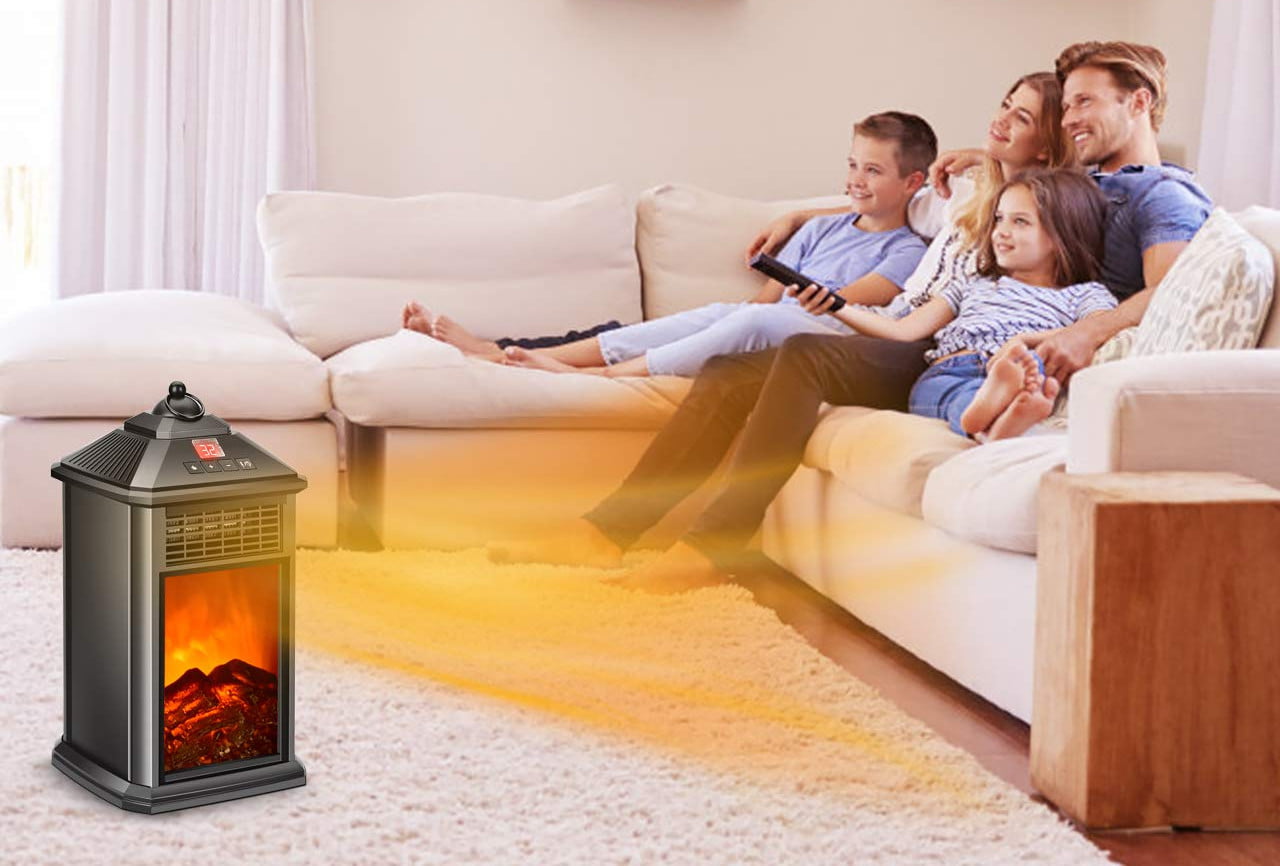Spring may be here, but it’s still chilly in many parts of the U.S. If you have chilly spots in your home, have you considered buying a space heater? A new energy-efficient space heater could be the best solution for an unusually cold space in an otherwise comfortable building. Even if your smart thermostat is the head of the class, you can remedy cold spots quickly with an energy-efficient space heater. If you remember cold days last winter when you could have used a space heater, now’s also an excellent time to take advantage of off-season sales when manufacturers’ inventory is full.
Here are our top picks for energy-efficient space heaters:
-
Honeywell 360 Degree Surround Heater, HHF360V, Black
— $33, was $40 -
AeroHome 1500W / 750W Ceramic Space Heater
— $44, was $49 -
Dreo Space Heater
— $45, was $50 -
Lasko 755320 Ceramic Space Heater
— $66, was $70 -
Dreo 16-inch Space Heater with remote control
— $67, was $75 -
Costway 1500W Electric Oil Filled Radiator Space Heater
— $76, was $170 -
Dreo 24-inch Space Heater
— $84
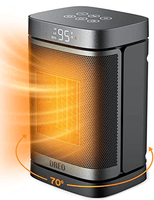
Dreo Space Heater
$45
$50
Convenient-sized1500-watt ceramic space heater for a small room. Four heating modes, 12-hour timer, and quiet operation. Touch controls located on the top.
more
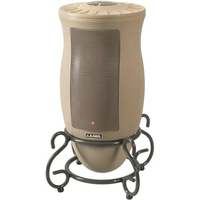
Lasko Oscillating Electric Ceramic Space Heater with Remote Control
$66
$70
This Lasko unit easily blends into any room. It may be small but it can pump out over 1,500 watts of heat. The unit also oscillates, guaranteeing heat will spread around the room efficiently.
more
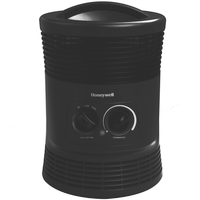
Honeywell 360 Degree Surround Heater, HHF360V, Black
$33
$40
The Honeywell 360 Degree Surround Heater has a thermostat with two heat settings and manual controls. Safety features include a tip-over switch, overheating protection, and a Cool Touch housing.
more
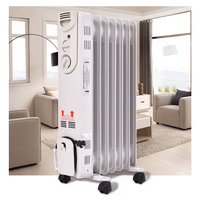
Costway 1500W Electric Oil Filled Radiator Space Heater
$76
$170
With four wheels and a handle, the Costway space heater is easy to move where needed. Three power settings let you find your perfect comfort level.
more

Lasko 755320 Ceramic Space Heater
$66
$70
This ceramic space heater uses an oscillating fan to distribute heat throughout the room. The 1,500-watt ceramic heating element has an adjustable thermostat with a digital display.
more
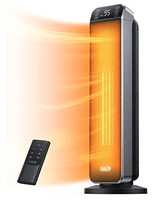
Dreo 24-inch Space Heater
$84
Use this oscillating ceramic space heater for a bedroom, home office, or other moderate size rooms. Remote control and 3 heating modes.
more
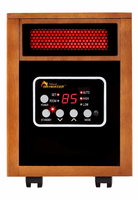
Dr. Infrared Heater Portable Space Heater, 1500-Watt
$120
$130
This space heater smartly uses an infrared quartz tube to heat objects that are directly in front of it, while it relies on a PTC heating element to warm the surrounding air.
more
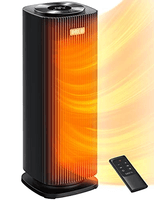
Dreo 16-inch Space Heater with remote control
$67
$75
Adjust from 41 to 95 degrees with this 900 to 1500-watt ceramic space heater with 2-second heating mode. Suitable for medium-sized rooms, this unit has multiple safety features and quiet operation.
more
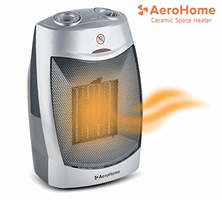
AeroHome 1500W / 750W Ceramic Space Heater
$44
$49
The AeroHome Ceramic Space Heater has three settings: 1,500-watts, 750-watts, and Fan. Lightweight at just 3.5 pounds, the AeroHome has a convenient carrying handle. ETL-certified for indoor use.
more
How to Choose a Space Heater
Electric heaters are less efficient but typically safer and more versatile than petroleum-fueled models. Electric heaters can be further subdivided into convection heaters, radiant or infrared heaters, ceramic heaters, and panel heaters (also called mica thermic heaters).
Convection heaters are generally the most energy-efficient electric heaters, especially for large, enclosed spaces. Convection heat works by warming the surrounding air. And though it can take a little while for a room to heat up, the warmth will linger even after you turn off the device.
Radiant or infrared heaters direct heat at specific people (or objects). They warm up rather quickly, but the hot air dissipates just as fast the minute you turn off the heater.
Ceramic heaters circulate air while focusing the heat where it’s most needed. And they can remain cool to the touch.
Finally, you can also purchase panel (or mica thermic) heaters which combine both radiant and convection technology. These appliances often heat up rapidly and distribute warm air throughout the room.
Other factors to consider
Heat distribution — The best energy-efficient heaters distribute hot air around the room quickly and evenly. This means that they don’t just provide warmth to whichever people or objects are directly in front of them. They are designed to have a wider distribution and push air farther away. Space heaters made with oscillation systems are especially adept at even heat distribution, and since they are relatively fast at heating rooms, you don’t have to use them for as long a time.
Timers — Timers are a great way to conserve energy. You can set specific times/parameters for when your heater turns on and off to prevent running the heater unnecessarily.
Thermostats — Most energy-efficient space heaters have easy-to-use thermostats, so you don’t expend additional energy.
Programming capabilities — Some of the more high-tech heaters on the market are programmable so you can set temperatures for different times of the day. A handful of space heaters are smart devices you can control them via your phone.
Automatic shutoff — You don’t want a space heater to run indefinitely. Aside from being a safety risk, that is simply not efficient or cost-effective. The best heaters shut off automatically once they’ve been running for a while.
Overheating safety/kill switch — Overheating protection features cut power if your heater gets too hot. That way, you don’t have to worry about damaging electric circuits or starting a fire.
Portability — Portable space heaters, like patio heaters and garage heaters, can reduce the number of appliances you need. Many people only need one good device that’s capable of being moved from room to room. Be on the lookout for lightweight heaters equipped with handles or casters.
Room size — Select a space heater with power appropriate for the size of the room in which you will use it. The higher the heat output, the more energy used. A small space may require only 750 watts of power, while a larger area might need 1,500 watts. Choose a heater that provides enough warmth for the square footage and nothing more.
Fan-only option — Space heaters with fan-only options can be used as fans in warmer weather.
Size of heater — Size matters. Many people want relatively compact space heaters so they are easier to move and store and relatively unobtrusive whenever you use them.
Noise — Noise is another factor to consider. While most space heaters are relatively quiet, there is a range. Some might whir or click or hum. Make sure you find a heater that’s as quiet as possible or emits a white noise that you know you’ll be able to tolerate.
Intuitive Controls — As with any piece of technology, look for a space heater with simple controls. You don’t want to accidentally set your heater to the highest temperature possible and then not know how to adjust accordingly.
Safety matters, too
We want to mention safety issues. There are risks involved when space heaters are misused; they can lead to everything from burns to house fires.
